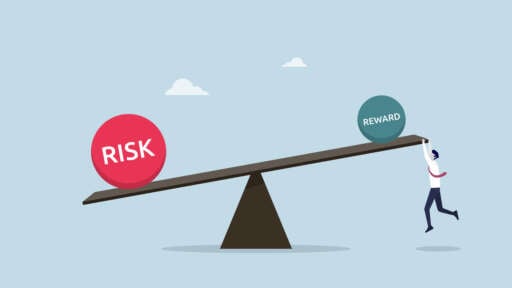
An interesting pub quiz question could be to ask how many times the Nasdaq Composite index has risen from its low point in 1974, which came soon after the index was launched. Has it risen five times, 10 times, 20 times, 50 times? The answer is none of those. It is up an incredible 219 times! Which makes you think about all the blood, sweat and tears that has gone into investment strategy and analysis since 1974. All the meetings of investment committees, analysts’ reports, agonised buying and selling; all the self-congratulation when things go right and the chest beating when they go wrong. Yet has anybody apart from Warren Buffett matched the appreciation achieved by the Nasdaq Composite index. Probably not is the most likely answer.
It is this realisation that created the phenomenon of passive investing, setting up low cost funds known as ETFs (exchange traded funds, which you can buy and sell them just like any other share) which simply track an index.
The investment process is not quite as passive as it sounds because indices are not static. On the contrary they are periodically rebalanced around the best performing shares so they are a bit like momentum funds. The beauty of the process is that there is no discretion involved. As new successful businesses emerge their values rise until they force their way into the indices, displacing businesses that are not performing so well. Think Amazon comes in and some dying department store business drops out and you get the idea of what is happening. Indices are forward looking, based on the businesses of the future and continually discarding the businesses which history is leaving behind. It works so well that in 2017 I launched Quentinvest for ETFs, an online service which advises subscribers when and what ETFs to buy. It is doing very well, especially from the perspective of UK-based subscribers which is most of them.
I describe the UK indices as elephants’ graveyards. For some reason when it comes to technology, which is at the heart of why the US indices are so strong, the UK and Europe have noticeably failed to join the party. Is it something to do with the regulatory mindset, which has led to the creation of the EU and the whole Brussels bureaucracy? I think it may be but whatever the reason the FTSE 100 has become a place where businesses go to die.
The FTSE 100 did have a glory period. Between 1988, when the index was launched and 2000 it rose fourfold. Over a similar period the Nasdaq 100 index (like the Nasdaq Composite but with a heavier weighting of technology shares) rose 24-fold so let’s not get too excited about UK shares.
Since 2000 the Nasdaq 100 has almost trebled from the then peak and risen 15-fold from the 2003 low point. Over the same period the FTSE 100 is down slightly on its 2000 peak and has slightly less than doubled from its 2003 low point. The resulting massive outperformance by US shares of UK shares shows why it makes great sense for UK investors to buy US shares and US-focused ETFs and that is one reason why Quentinvest for ETFs is delivering brilliant results for UK investors. Put another way, as Warren Buffett, has suggested many investors could save a great deal of agonising and obtain good returns just by buying an ETF tracking a key US index. He suggested an ETF tracking the S&P 500, the nearest thing to an index of corporate America. It is not a bad idea. If you look at a chart of the S&P 500 it boomed and busted in the 1920s and 1930s but since then it has climbed impressively. It is currently 3,585. When it reaches 4,530, which it surely will one day, it will be up 1,000 times on the low point in August 1932.
My preferred index to track though is the Nasdaq 100, which is stuffed with tech stocks and heavily weighted to the best performers, Amazon, Apple, Netflix, Alphabet, Microsoft and others. It has risen over 100 times since 1985 and is clearly in a strong uptrend that looks as though it could run indefinitely into the future. You can track this index by buying shares in an ETF called QQQ. Like the underlying index QQQ has roughly trebled from the 2000 peak and is up almost 15-fold since the 2003 low point. An even better strategy with QQQ would be to invest equal amounts in the shares ar regular intervals. If you did this monthly the volatility of the index since 2000 would be a positive advantage because you would have been buying all the way down and then all the way up as it recovered.
This is another Buffet observation that if you take advantage share volatility can be good news for investors.
Look at the chart and you might think we are overdue another big setback but these things are impossible to time. We have also just had quite a significant sell-off triggered by Covid-19. Peak to trough QQQ fell from 303.50 to 259 and is currently 290.93. My guess is that we are in another consolidation, which is going to end up breaking higher so buying into the Covid-19 setback is probably going to end up looking like a very good idea. This is part of what I mean by the art of the obvious. An obvious way to make money from shares is to buy QQQ so why not do that, at least with some of your funds.
The other implication of the seemingly relentless rise of the main US indices is that selling is not a good idea. If you never sell you are going to win in the end and probably win big. If you try to time your buying and selling you take investment decision making from the rational part of your brain and hand it over to your emotions, especially emotions like greed, fear and crowd psychology. There is a danger that you will buy when everybody is excited (at a temporary high point) and sell when everybody is fearful (at a temporary low point). You end up looking at an index, which has climbed dramatically but somehow you have managed to lose money. This is why I often advocate a strategy of never selling for indices, ETFs and even individual shares.
The vast majority of people who make huge amounts of money in the stock market do it by broadly never selling. These people are the owners and founders of businesses, people like Bill Gates at Microsoft and Jeff Bezos at Amazon. They may dribble out some stock from time to time and realise their vast wealth as a retirement strategy but otherwise they stick by their business through thick and thin because they have an owner’s mentality. Buffett says all investors should feel the same. First they should only buy shares in companies where they want to be a part owner and secondly, once they have bought the shares, they should behave like an owner and be very reluctant to sell.
This is particularly relevant at the moment because of the technology revolution. This revolution is all about technology and is being driven by high and rising spending on research and development. Most of the companies which I look at and recommend across my publications not only spend heavily on r&d but spend much more every year. Globally r&d spending is going through the roof and driving the global technology revolution at an accelerating rate. This in turn is disrupting the way we do things and dividing the stock market into winners and losers on a global scale. This is making it possible for companies with disruptive technologies to grow rapidly from tiny beginnings and to keep growing at high rates for an amazingly look time. We already have examples of businesses like Amazon and Alphabet, founded around the turn of the millennium, which have grown so strongly that they are valued at over a trillion dollars.
I believe we already have an exciting second generation of companies, which are also going to achieve valuations in the trillions of dollars. I have particularly emphasised the USA in my search for such companies but I am increasingly impressed by what is happening in China and also starting to notice exciting technology disruptors popping up all over the world.
The big change in China is the transition by the economy from export-led demand to a domestic consumption boom led by the emergence of a huge and increasingly affluent middle class. Income per head in China is still well below US and European levels but there are over 550m Chinese categorised as middle class and something like 100m of those who are among the top 10pc in the world for wealth. This is driving an epic consumer boom, which is being catered to partly by imports, especially of luxury goods based on history-laden heritage brands that just don’t exist in China. It is also driving innovation in China led by a generation of incredible entrepreneurs. who not only behave as though they grew up in Silicon Valley but were often educated at Stanford, which may explain why they all have names like Fred, Bill and Joe as well as their Chinese names. The emergence of strong domestic demand in China may explain why all the huffing and puffing between Trump and China has had so little impact.
It is also leading to Hong Kong rediscovering its role as a key financial centre. Nobody in the West will touch Shanghai-quoted shares with a bargepole since nobody trusts Chinese accounting and banking standards. Hong Kong is a different story. Tencent is quoted in Hong Kong and valued at $885bn and Alibaba recently also became quoted in Hong Kong while raising additional funds. It is still a bumpy ride but the number of explosively growing quoted Chinese disruptors, names like Meituan Dienping, Pinduoduo, Nio, Li Auto and Futu Holdings is growing fast.
Pinduoduo is a textbook example. The company was only founded in 2015 but is already the second largest online market place in China with some 731m users and a market value of $128bn. Some of these shares can be incredibly volatile. Nio, founded by an entrepreneur who previously founded BitAuto, has seen its shares rise 20-fold since April. Last Friday alone the shares ranged between $40 and $54. More volatility is certain because the company is being described as the Chinese Tesla and doubled sales last month but to a still tiny figure. The share price performance is driven by where they might be in a decade, not were they are now. But that is not to say the excitement is not justified. Given what Nio has achieved already who knows where they might be five and 10 years from now.
The latest turn of the wheel on the virus front has brought the promise of a vaccine centre stage and this has led to profit taking among shares that clearly benefited from lockdown. Shares in companies like Zoom Video Communications, (working from home), Peloton Interactive (exercising at home) and Etsy (e-commerce but with 100s of millions of masks being sold on the platform) have seen their shares fall heavily. This is understandable and maybe justified but these are businesses that were all growing fast before the pandemic, where innovation continues at an accelerating rate and where the new normal, working from home and the office and with greater attention to hygiene, is likely to permanently favour their businesses.
Anther major trend which has been accelerated by lockdown but was happening before and will continue afterwards is digital transformation. Every business in the world has realised that digital transformation is no longer discretionary. Businesses that don’t transform themselves by for example changing the way they engage with customers, automating repetitive processes, making sure they are fully compliant with regulations and taxes and marketing their goods and services in the places (mobile phones) where people are looking, will not survive, let alone prosper.
In China Pinduoduo is using its platform to connect farmers directly with final consumers. This has huge benefits. Farmers earn more while consumers pay less but it has also revealed that the current distribution infrastructure for agricultural produce is traditional, out of date and not fit for an online world. The group is already setting out to change this and it is clear that Chinese and probably global agriculture is entering a period of massive change.
Pinduoduo is just one of countless examples of companies growing apace by changing the world. This is why in the heading I refer to hot stocks galore. The choice of incredible businesses for investors to add to their portfolios has never been more amazing. It is for this reason that I expect the US-led equity bull market to run and run and become the greatest bull market in investment history. We live in a world of marvels with artificial intelligence, 5g, the Internet of Things, augmented and virtual reality and autonomous driving all making great strides. I haven’t even mentioned the growing emphasis on environmental protection and fighting climate change.
There has never been a better time to build a high quality growth stock portfolio.



